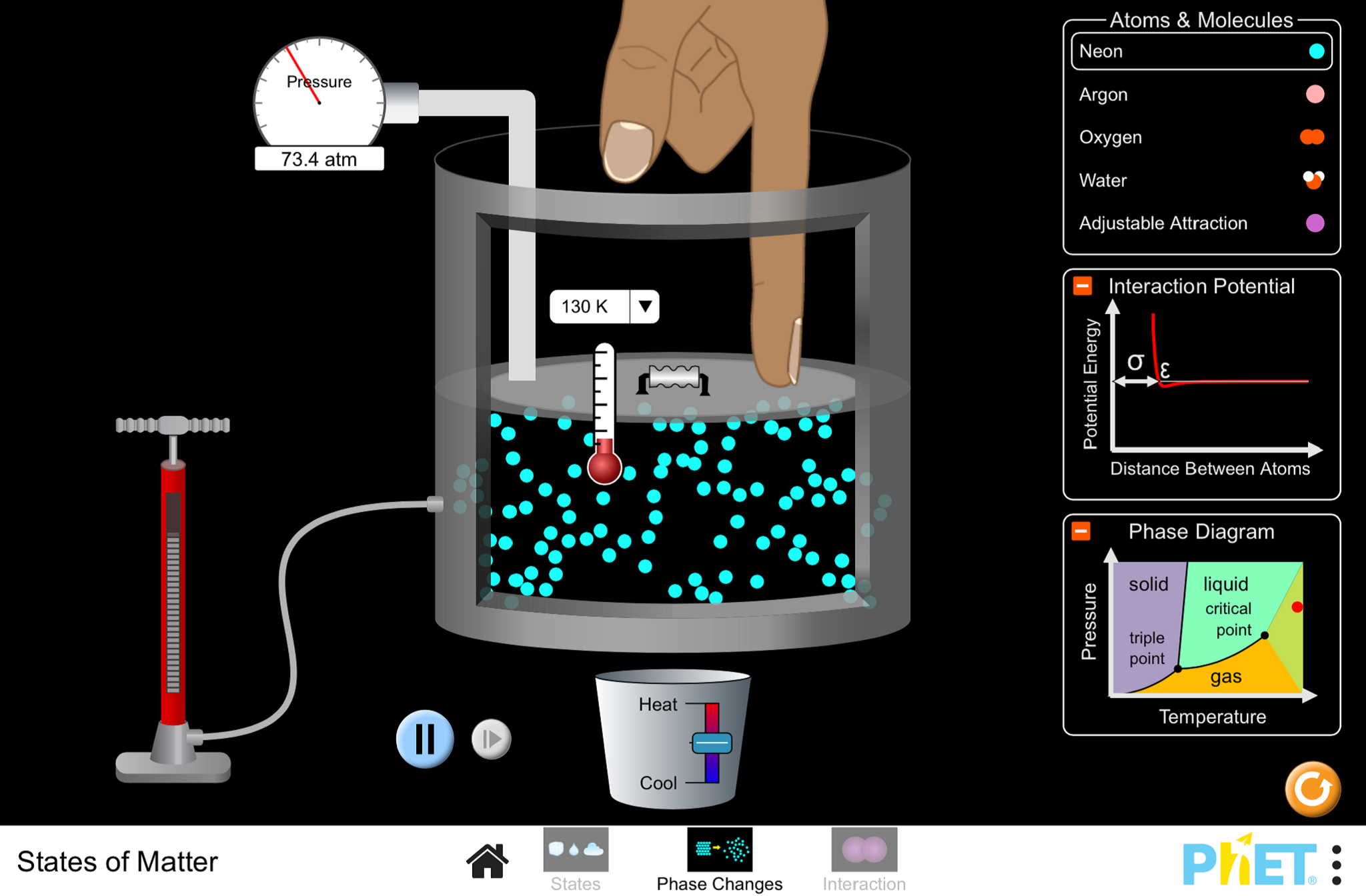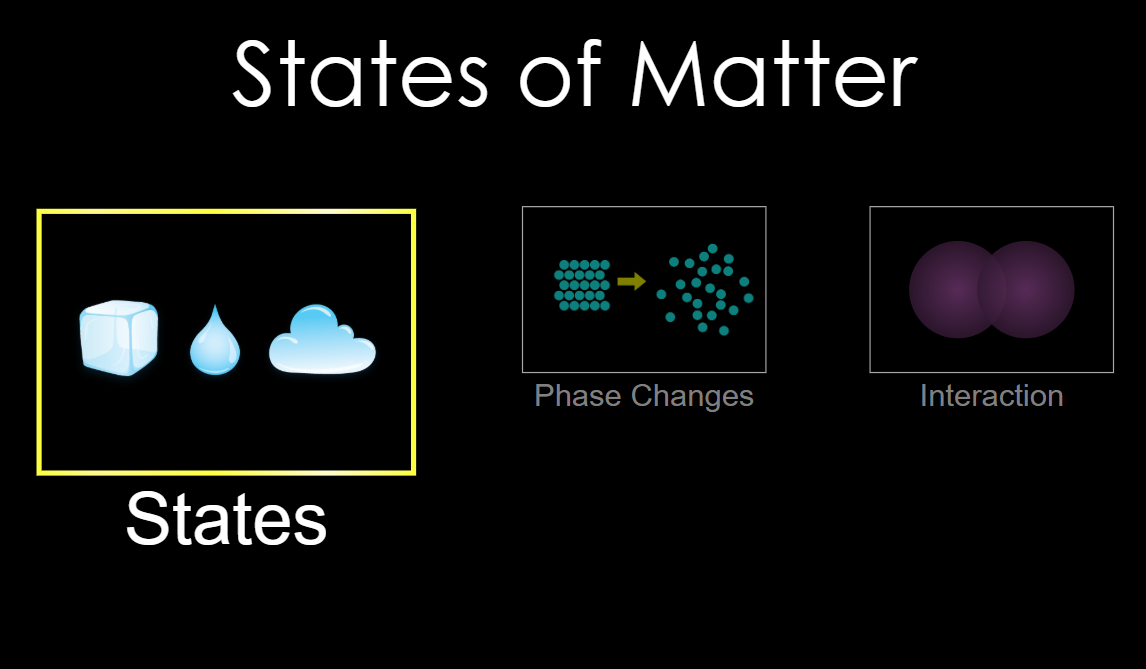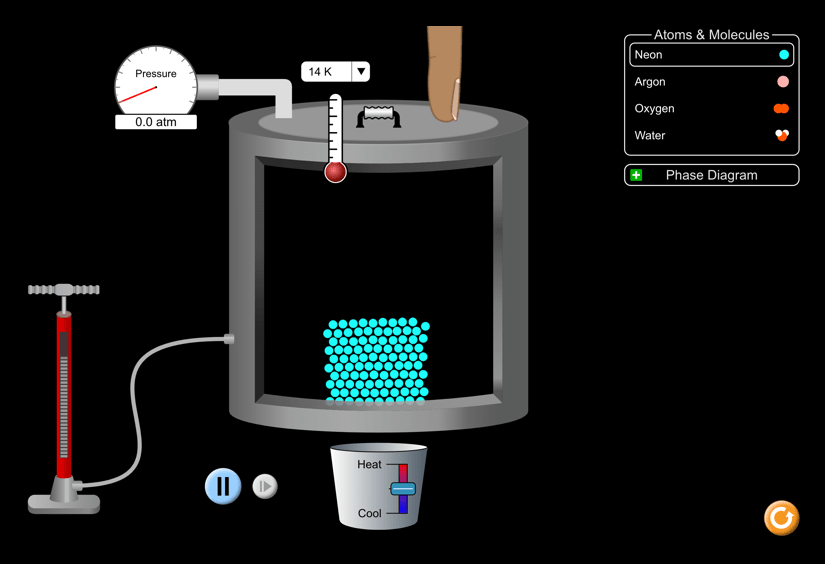
States of Matter Solid, Liquid, Gas Concept of Triple Point, Critical Point PHET
Heat, cool and compress atoms and molecules and watch as they change between solid, liquid and gas phases.

GitHub phetsims/statesofmatter "States of Matter" is an educational simulation in HTML5, by
PhET: States of Matter - Basics. not declared. Heat, cool and compress atoms and molecules and watch as they change between solid, liquid and gas phases. Heat, cool and compress atoms and molecules and watch as they change between solid,..

PhET States of Matter Activity Guide / Distance Learning Matter activities, States of matter
States of Matter - phet-dev.colorado.edu

PhET States of Matter Basics Activity Guide / Distance Learning Matter activities, Science
PhET Simulation: States of Matter. published by the PhET. supported by the National Science Foundation. This simulation helps learners visualize how molecules behave in solids, liquids, and gases. Add or remove heat and watch the motion of the molecules as they change phase. Push the pump and change the volume of matter in the closed container.

PhET States of Matter SIM Explained YouTube
States of Matter: Basics - phet-dev.colorado.edu

States of Matter PhET LearnChemE
Description Heat, cool and compress atoms and molecules and watch as they change between solid, liquid and gas phases. Sample Learning Goals Describe characteristics of three states of matter: solid, liquid and gas. Predict how varying the temperature or pressure changes the behavior of particles. Compare particles in the three different phases.

States of Matter Basics American Chemical Society
States of Matter: Basics - University of Colorado Boulder

PhET Gas Laws Simulation States of Matter Basics May 3, 2021 YouTube
States of Matter - TISS

CH3 States of Matter PHET LAB Stimulation Investigating Matter with States of Matter
States of Matter Description Heat, cool and compress atoms and molecules and watch as they change between solid, liquid and gas phases. Sample Learning Goals Describe characteristics of three states of matter: solid, liquid and gas. Predict how varying the temperature or pressure changes the behavior of particles.

PhET States of Matter YouTube
DEIB in STEM Ed. Donate. Heat, cool and compress atoms and molecules and watch as they change between solid, liquid and gas phases.

States of Matter PhET Simulation YouTube
States of Matter: Basics - PhET Interactive Simulations

PhET States of Matter Basics Sadler Science
Description Watch different types of molecules form a solid, liquid, or gas. Add or remove heat and watch the phase change. Change the temperature or volume of a container and see a pressure-temperature diagram respond in real time. Relate the interaction potential to the forces between molecules. Sample Learning Goals

PhET Simulation States of Matter Teaching Resources
PhET Simulation: States of Matter. published by the PhET. supported by the National Science Foundation. This simulation helps learners visualize how molecules behave in solids, liquids, and gases. Add or remove heat and watch the motion of the molecules as they change phase. Push the pump and change the volume of matter in the closed container.

PHET States of Matter Basics PDF Gases Temperature
Aug 17, 2020. PhET: Rutherford Scattering. PhET: Under Pressure. PhET: States of Matter is shared under a not declared license and was authored, remixed, and/or curated by LibreTexts. Back to top.

PhET States of Matter. Walkthrough the Simulation YouTube
similarities between each state. • Explore how you can change the state of matter of the substance in the container. • Describe the difference in the movement of the particles in a solid, liquid, or gas. • Predict what happens to the substance when it is heated or cooled. • Describe a method to stop the atoms or molecules from moving.

‘States of matter Basics’ simulation model (PhET, n.d.) Download Scientific Diagram
Describe characteristics of three states of matter: solid, liquid and gas. Predict how varying the temperature or pressure changes the behavior of particles. Compare particles in the three different phases. Explain freezing and melting with molecular level detail. Recognize that different substances have different properties, including melting.